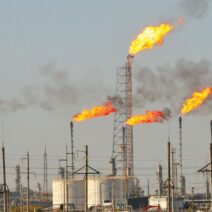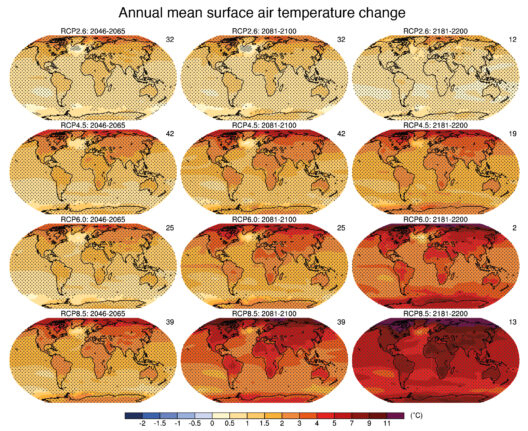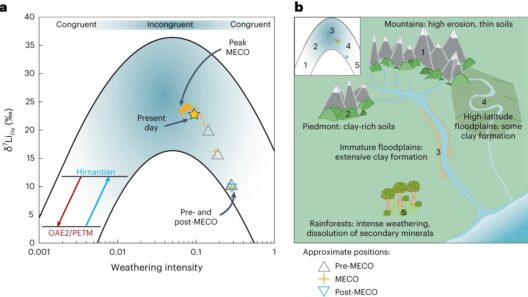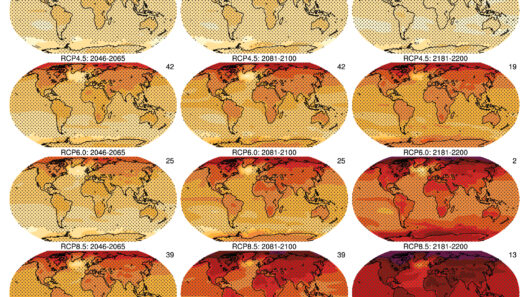Climate change, an omnipresent and pressing concern of our epoch, manifests its most severe consequences across various regions of the globe. The arduous reality of rising temperatures, erratic precipitation patterns, and increased frequency of extreme weather events creates a mosaic of suffering and adaptation challenges. Understanding the geographical disparities of climate change impacts is imperative for shaping effective policies and fostering community resilience.
One striking observation frequently noted is the uneven distribution of climate-related effects, which often exacerbates pre-existing socio-economic vulnerabilities. The global heatmap illustrating these disparities can elucidate where the climate crisis strikes hardest, shedding light on the intersectionality of environmental degradation and human well-being.
Regions such as the Arctic are experiencing the most pronounced alterations due to climate change. The phenomenon of polar amplification leads to temperature increases in the Arctic that are roughly twice that of the global average. This profound shift threatens entire ecosystems, as permafrost melts, releasing stored carbon and further accelerating climate change. Biodiversity is significantly at risk; species such as polar bears and seals depend on stable ice for their survival, and their dwindling habitat symbolizes a broader ecological peril.
Moving southwards, we encounter the sub-Saharan African regions where climate change exacerbates an already dire situation. Extended droughts and erratic rainfall patterns challenge agricultural productivity—a linchpin for the livelihoods of millions. These climatic adversities inevitably breed food insecurity, intensifying competition over dwindling natural resources and potentially igniting conflict. The interconnectedness of climate change and socio-political stability in this part of the world is a stark reminder of the multifaceted nature of global warming.
In contrast, coastal areas globally are confronting the relentless threat of sea-level rise. As glaciers and ice sheets melt, the ramifications are profound for densely populated regions, particularly in Southeast Asia. Cities such as Jakarta and Bangkok are grappling with severe flooding, a harbinger of the realities that coastal urban centers must face. The urgency with which these areas need to adapt cannot be overemphasized, as economic vitality often hinges upon one’s geographic positioning.
Furthermore, the Americas are not insulated from the implications of climate change. The Western U.S. is witnessing an alarming trend of increased wildfires, fueled by prolonged droughts and higher temperatures. The destruction caused by these natural calamities not only devastates ecosystems but also imposes significant economic costs associated with firefighting, recovery, and rebuilding efforts. This cycle of destruction amplifies awareness of climate change, pressing communities and policymakers to reconsider land management strategies and infrastructural integrity.
Similarly, the eastern parts of the United States are facing the dual threats of intensified hurricanes and flooding. The 2020 Atlantic hurricane season, which was historic in both intensity and duration, exemplifies the realities of this phenomenon. The relationship between warmer ocean temperatures and hurricane ferocity serves as a stark illustration of how climate change is reshaping weather patterns—and the lives of those in its wake. Hence, the vulnerability of urban infrastructure and the readiness of emergency services become critical points of consideration for affected communities.
The economic implications of these climatic disruptions are profound. Insurance markets struggle to keep pace with escalating risk, while agricultural sectors painfully adjust to the unpredictability of growing seasons. Economies that hinge on reliable weather patterns, such as agriculture-dependent nations, find themselves at a crossroads; they must innovate sustainability practices in the face of existential threats posed by climate change. The need for diversified crops and resilient agricultural practices has never been more pressing.
Despite the gravity of these challenges, climate change also presents opportunities for innovation and advocacy. The quest for renewable energy sources, such as wind and solar, has become a beacon of hope. Regions that formerly relied heavily on fossil fuels are now exploring alternative energy strategies, leading to potential economic rejuvenation and sustainability. From rural wind farms transforming economies in the Midwest to urban solar initiatives altering cityscapes, the transition towards cleaner energy can catalyze local job creation while mitigating the impacts of climate change.
Additionally, community engagement and educational initiatives that connect individuals to climate science foster environmental stewardship. When citizens are empowered with knowledge about their local conditions and the broader implications of climate change, they become critical players in the adaptation narrative. Grassroots movements have shown the potential to influence policy and bring about substantial change, emphasizing the importance of public involvement in the fight against climate change.
Ultimately, the global heatmap of climate change impacts reveals a tapestry rich in complexity and urgency. The fragility of ecosystems, the social ramifications of environmental stress, and the myriad of adaptation strategies all coalesce to portray a world at a pivotal juncture. Understanding where climate change strikes hardest does not merely inform us of the immediate distress; it calls forth a collective responsibility to act.
As humanity navigates this treacherous terrain, recognizing the interconnectedness of our fates becomes paramount. By addressing the diverse impacts of climate change and fostering collaboration across borders and boundaries, we bolster our resilience to withstand the challenges ahead. The heatmap serves not just as a testament to the crisis at hand but as a rallying cry for a united front against the encroaching adversities of climate change.






